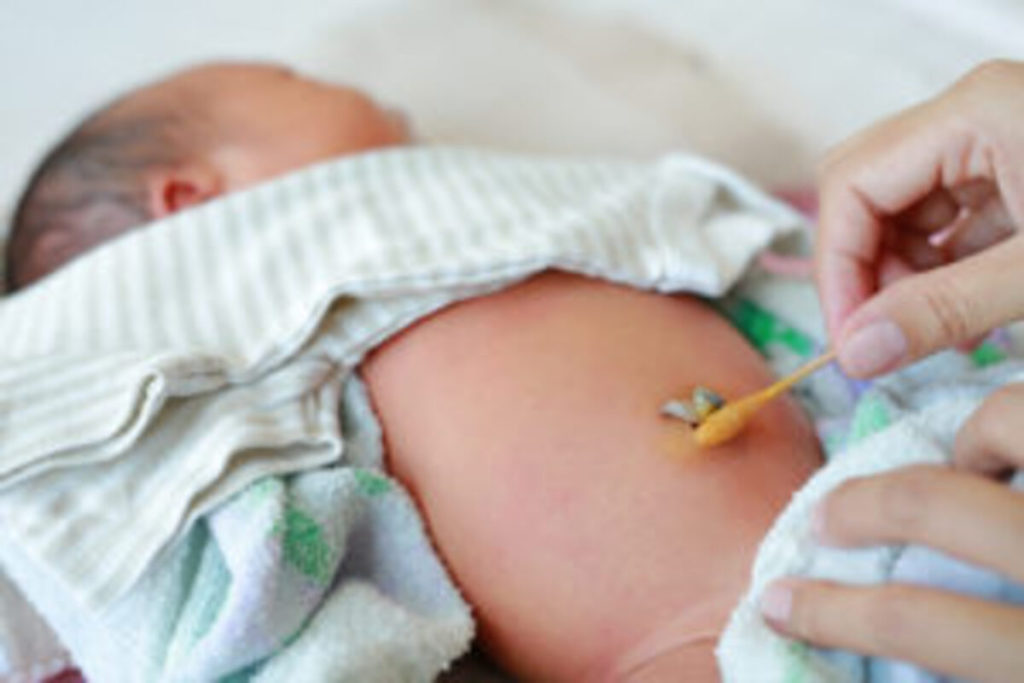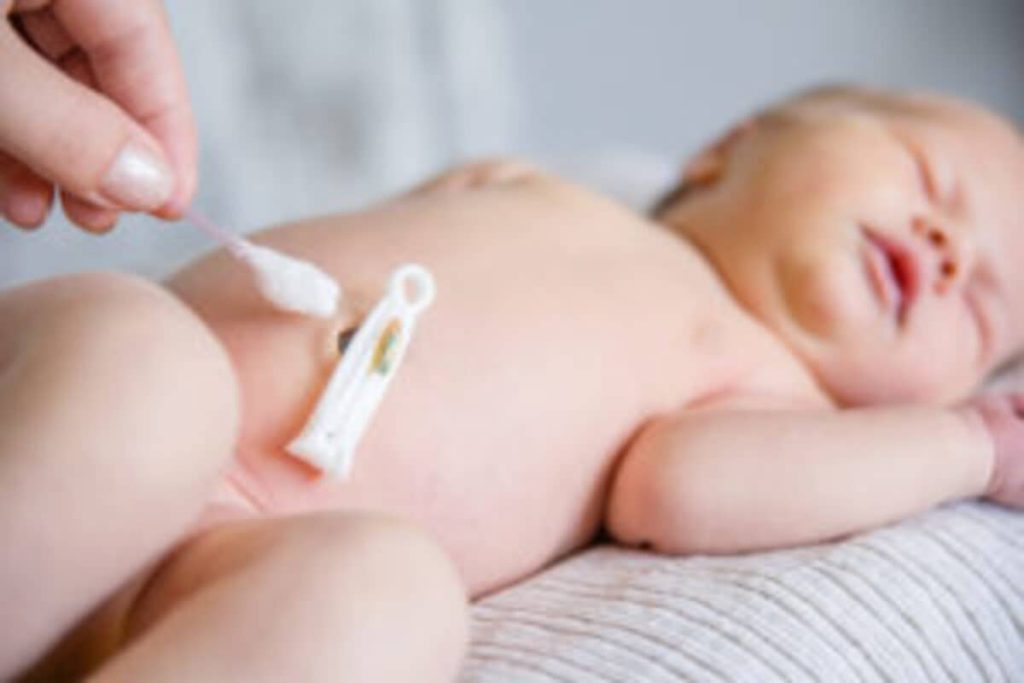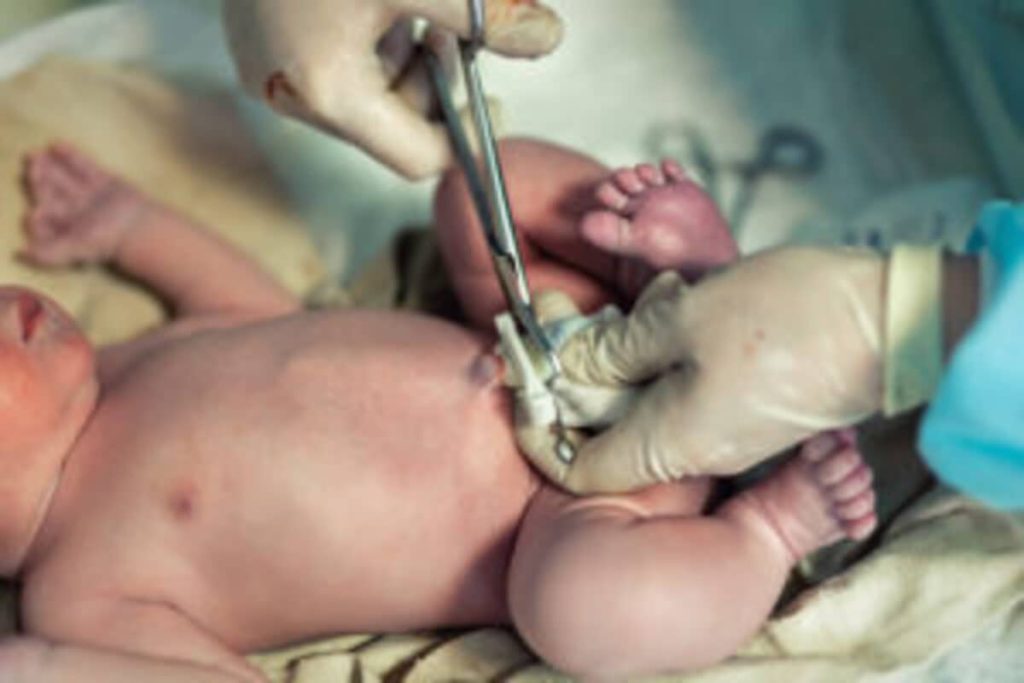During pregnancy, the umbilical cord delivers nutrients and oxygen to your baby and also removes his/her waste products. Immediately after delivery, the cord would be cut as it is no longer needed. However, the stump will remain on your baby’s tummy, very close to the navel.
In this post. you’d find all you need to know about umbilical cord infection; the causes, signs, symptoms, risk factors, and tips on how to care for an umbilical stump.
Table of contents:
- What’s An Umbilical Cord Infection?
- Signs & Symptoms of Umbilical Cord Infection
- What Are The Risk Factors for Umbilical Cord Infection?
- How Dangerous Is An Umbilical Cord Infection?
- How To Treat An Umbilical Cord Infection
- How To Prevent Umbilical Cord Infections
- How to Care for An Umbilical Stump
- Conclusion
What’s An Umbilical Cord Infection?
In the process of cutting and clamping the cord, or even taking care of it, the umbilical cord may become infected. This infection is called omphalitis. Thankfully, it is really rare in developed countries due to the availability of effective postpartum care and prenatal diagnosis.

However, this is not the case in developing and underdeveloped countries where umbilical cord infections are quite common.
Signs & Symptoms of Umbilical Cord Infection
As it is with many other medical conditions, umbilical cord infections often come with a number of telltale signs and symptoms.

There’s a really high chance that your little one has an umbilical cord infection if there’s:
- Severe Bleeding: Although it’s normal for the stump to bleed a little when it is ready to fall off, severe and sustained bleeding from the umbilical cord may be a sign of an infection.
- Pus-like discharge: from the skin around the cord stump.
- Rash or blisters around the cord
- Swellings: In most cases, any reddish, warm, tender and swollen skin around the cord indicates an umbilical cord infection.
- Fever
- Irritation: as a response to touch or pressure on the umbilical cord.
- Severe lack of appetite
- A bad odor coming from the cord.
What Are The Risk Factors for Umbilical Cord Infection?
The following factors can put your baby at risk for developing an umbilical cord infection:
- Premature birth
- Low birth weight
- Maternal infection during pregnancy
- If your water (amniotic membrane) broke 24 hours or more before delivery.
- If you delivered your baby in an unsterile condition or your healthcare provider uses an unclean instrument to cut the umbilical cord.
- Improper care of the umbilical stump after delivery e.g. getting the stump dirty or attempting to pull it off.
How Dangerous Is An Umbilical Cord Infection?
Infections of the umbilical cord (or any type of infection in your baby) can be life-threatening and require urgent attention. This is because the umbilical cord has direct access to the bloodstream, hence, even a mild infection can become severe.

In addition, your baby’s immune system is not fully developed and may not be strong enough to fight some infections, making every infection more dangerous in newborns than adults. Furthermore, infections in the bloodstream (or sepsis) can easily damage every organ or tissue supplied by the infected blood.
As a result, you should call your doctor immediately you notice any of the signs and symptoms mentioned in this article. This is really helpful because early diagnosis and treatment would reduce the risk of further complications.
How To Treat An Umbilical Cord Infection
In most cases, the treatment plan for umbilical cord infections depends on the cause and severity of the infection in question.
If your child has a minor infection, your pediatrician may recommend that you apply an antibiotic ointment multiple times a day. This kind of treatment is recommended if your child seems fine except for the discharge of a small amount of pus from the cord stump. Nevertheless, it is important to remember that trivializing a minor infection and not seeking help can make the infection worse than expected. In fact, your pediatrician should be the one to determine the severity of an umbilical cord infection.

If the infection is very serious, your baby may be admitted to the hospital in order to provide adequate care and treatment. In this case, your baby will be given antibiotics intravenously (administration of drugs through the vein). This may go on for about 10 days, depending on how quickly your baby responds to treatment. After this, oral administration (giving drugs via the mouth) may be introduced.
In some severe cases, the site of the infection may need to be drained surgically.
Irrespective of the state and severity of infection, don’t administer home treatment to your baby until you’ve consulted your doctor. Also, you should not bathe your baby in water until the infection clears. Instead, you can wipe his/her body with a clean damp towel or sponge.
How To Prevent Umbilical Cord Infections
The following measures, when put in place can help to prevent infections of the umbilical cord:
- Wash your hands thoroughly and properly before touching your baby’s umbilical cord.
- Ensure that your baby receives the best of care during delivery. Don’t allow the use of unclean and unsterilized instruments to cut your baby’s umbilical cord at birth.
- Don’t pick or pull off your baby’s umbilical cord.
- Avoid the use of powders and other home-remedies on the cord.
- Follow your pediatrician’s advice on how to keep your baby’s umbilical cord clean.
- Roll down your baby’s diapers so that they do not rub against your baby’s umbilical cord.
- Be sensitive to the changes in your baby’s umbilical cord shape and color as the days progress and report any significant findings to your baby’s doctor.
How to Care for An Umbilical Stump
In addition to the tips provided above, there are other strategies you can put in place to reduce the risk of your baby developing an umbilical cord infection. Some of these include breastfeeding your baby and having proper skin-to-skin contact with him/her.
The importance of breastfeeding in the early days and months after birth cannot be overemphasized. Breastfeeding allows you to pass some antibodies to your baby. Antibodies are substances that help to fight infections and diseases. Your baby’s immune system is weak and they lack some of these antibodies, therefore, proper breastfeeding helps to build and strengthen their immune system.
Skin-to-skin contact (which is gotten when you place your baby’s chest on your bare chest). This would help transfer several helpful skin bacteria from your skin to your baby’s. These bacteria are not harmful and can help to fight other bacteria that are not a part of the normal skin bacteria when they surface.
Conclusion
In most cases, umbilical cord infections are rare. However, your baby may still develop an infection in the absence of proper medical care. Also, you can prevent further complications by keeping an eye out for any of the signs mentioned in this article and calling your doctor immediately you notice a red flag.
Don’t forget: Early detection and treatment may be all you need to prevent the spread of a serious infection.
References
Jamlick Karumbi, Mercy Mulaku, Jalemba Aluvaala, Mike English, and Newton Opiyo (2013). Topical Umbilical Cord Care for Prevention of Infection and Neonatal Mortality. The Pediatric infectious disease journal. 32(1): 78–83. Accessed on 10th October, 2021 from https://doi.10.1097/INF.0b013e3182783dc3
José Luis Leante Castellanos, Alejandro Pérez Muñuzuri, César W. Ruiz Campillo, Ester Sanz López, Isabel Benavente Fernández, María Dolores Sánchez Redondo, Segundo Rite Gracia, and Manuel Sánchez Luna (2019). Recommendations for the care of the umbilical cord in the newborn. Anales de Pediatría (English Edition). Volume 90, Issue 6, Pages 401.e1-401.e5. Accessed on 9th October, 2021 from https://doi.org/10.1016/j.anpede.2019.01.009
Dan Stewart, William Benitz and Committee on Fetus and Newborn. Umbilical Cord Care in the Newborn Infant. American Academy of Pediatrics. 138 (3) e20162149. Accessed on 9th October, 2021 from https://doi.org/10.1542/peds.2016-2149

